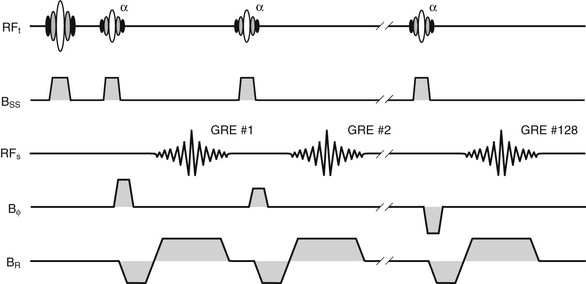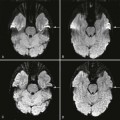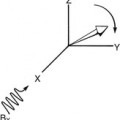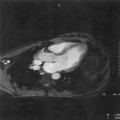Hybrid Fast Imaging Techniques
Objectives
At the completion of this chapter, the student should be able to do the following:
Key Terms
Speeding up image acquisition by reducing the repetition time (TR) and flip angle, α, causes a loss of contrast in gradient echo (GRE) images. Those parameters, which are usually available to improve contrast, are constrained by speed and signal-to-noise requirements.
Improved T1-weighted (T1W) contrast can be obtained in a fashion similar to that used in spin echo (SE) imaging with spin preparation strategies, such as the inversion recovery (IR) technique. Recall that in IR SE, the inversion of spins occurs before each sampled line of k-space.
Turbo Imaging
These methods often have names with a turbo, snapshot, insta, or hyper prefix. GREs are acquired after several α pulses prepared by an inversion pulse (Figure 19-1). For each line of k-space, a different spatial frequency in the direction of phase encoding is sampled with each phase-encoding step.
Low spatial frequencies are more important to image contrast than high frequencies, which primarily contribute to edge enhancement and spatial resolution. Understanding this spatial frequency weighting is the key to understanding both the image contrast behaviors of faster imaging and the way that a static image can be obtained from a moving object.
TurboFLASH, snapshotFLASH, snapshotGRASS, and others are all similar imaging techniques that were introduced at different times by different groups who worked with different equipment. In this discussion, these techniques are identified as “turbo” because that is the term most adopted.
The common approach to turbo imaging is a 180° inversion pulse at the beginning of the sequence to generate T1W contrast. Other spin preparation methods have been introduced to provide T2-weighted (T2W) contrast or flow-diffusion weighting. With this technique, the data are acquired while the tissue relaxes.
Each line of k-space deals with a different amount of longitudinal magnetization (MZ). In other words, each line has a slightly different T1W. The lines of k-space acquired with low-amplitude phase-encoding gradients that sample the lower spatial frequencies are important for image contrast.
For certain clinical applications, these turbo techniques challenge the established GRE technique. Although the GRE technique provides an image within 10 seconds, combining GRE with IR, while using even the shortest TI mixing times, would make the GRE sequence take an unacceptably long time. The problem then is how to use spin preparation schemes in a manner that preserves the short overall image acquisition times of GRE.
One-second images bring to mind new clinical applications; however, the simultaneous multislice GRE technique is almost as fast as the sequential multislice turbo approach in abdominal imaging within a breathhold. Nevertheless, because the turbo technique results in an image one slice at a time, there is a noticeable reduction in motion artifacts.
When compared with GRE, turbo imaging has additional degrees of freedom to control the contrast within the image. In Figure 19-2
Stay updated, free articles. Join our Telegram channel

Full access? Get Clinical Tree









